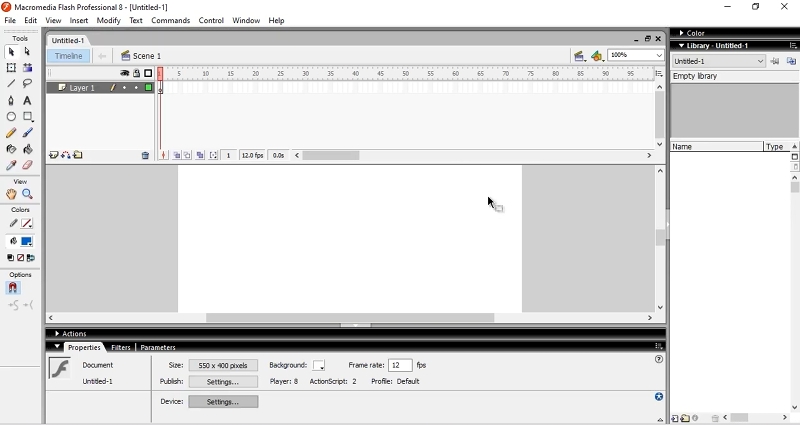Macromedia Flash
Macromedia Flash, later known as Adobe Flash, was a multimedia software platform used to create animations, interactive applications, web games, and other multimedia content. It was widely used in web development during the late 1990s and early 2000s before being gradually phased out in favor of newer technologies like HTML5, CSS3, and JavaScript.
Key Features of Macromedia Flash:
- Vector-based Graphics:
- Flash used vector graphics, which allowed for scaling images without losing quality, making it suitable for animations and interactive content.
- Animation and Motion Graphics:
- Flash allowed for complex animation and motion graphics. Users could create frame-by-frame animation or tweening (automatic interpolation between keyframes), making it a popular tool for web designers and animators.
- Interactive Content:
- Flash enabled interactivity through scripting, primarily using ActionScript (Flash’s own scripting language). This allowed developers to build interactive web pages, games, and applications.
- Multimedia Integration:
- Flash supported the integration of audio, video, and other media formats. This made it a go-to platform for rich media content on websites.
- Cross-platform Compatibility:
- Flash content could run on a variety of platforms (Windows, Mac OS, Linux) as long as the user had the Flash Player plugin installed in their browser.
- Rich User Interfaces:
- Flash supported the creation of complex user interfaces with buttons, forms, and other interactive elements, making it ideal for applications, games, and websites requiring a high level of interactivity.
- Streaming and Video Playback:
- Flash was one of the first widely used platforms for streaming video content over the internet. It supported streaming media, which helped to establish it as the standard for online video platforms in the early days of the web.
- File Size Optimization:
- Flash was known for its ability to create rich media experiences with relatively small file sizes, making it ideal for websites with limited bandwidth.
- Publishing Formats:
- Flash allowed content to be published in various formats, with the most common being the SWF (ShockWave Flash) file, which could be embedded in websites for playback.
- Development Tools:
- Macromedia Flash came with an intuitive interface for animators and developers, offering tools to design artwork, animate objects, and add interactivity through scripting.
Features and Highlights

- Macromedia Flash came with an intuitive interface for animators and developers, offering tools to design artwork, animate objects, and add interactivity through scripting.
Decline and Phasing Out:
Despite its dominance on the web for many years, Flash eventually became obsolete due to various factors:
- Security vulnerabilities
- Mobile devices (which didn’t support Flash well)
- Better alternatives (like HTML5, CSS3, and JavaScript) that were open standards and didn’t require plugins.
In 2017, Adobe announced that it would end support for Flash Player in 2020, and major browsers (like Chrome and Firefox) officially disabled the plugin. Today, Flash is no longer used for new projects, and developers have migrated to modern web technologies.
